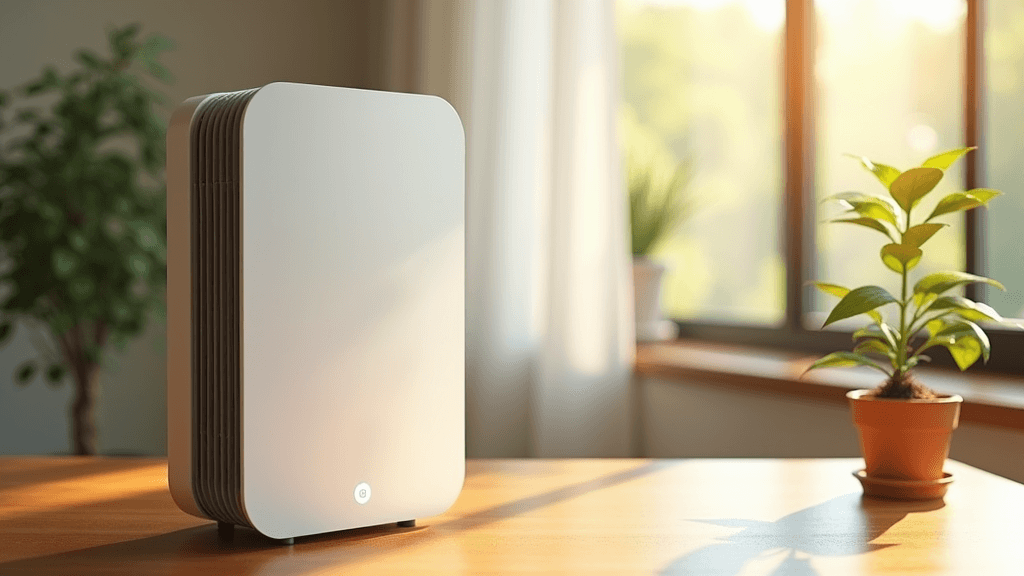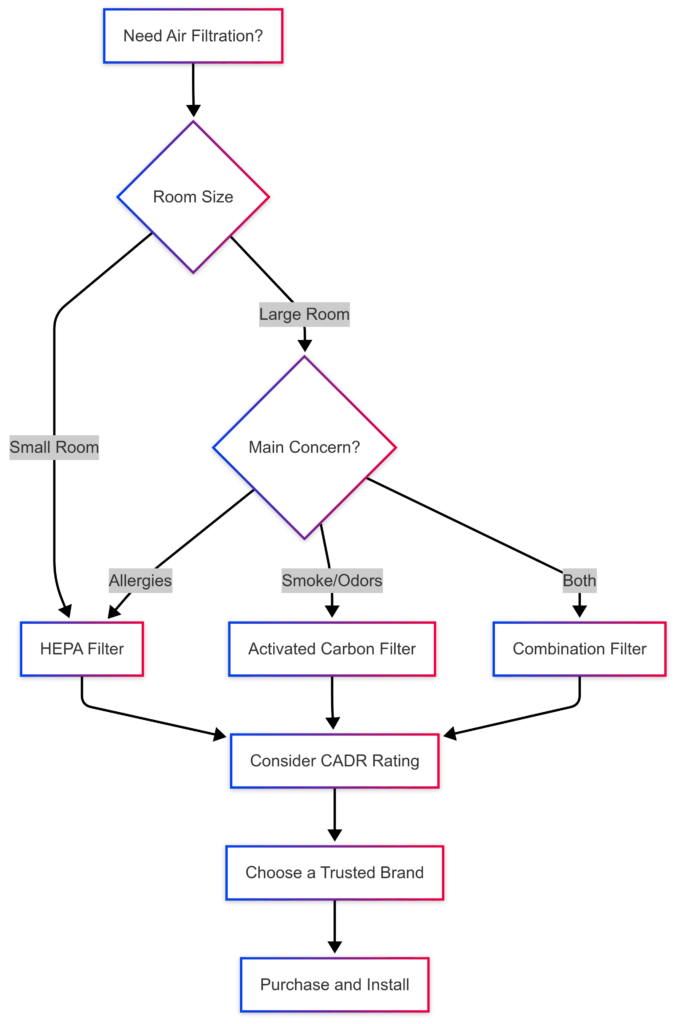Blending high-tech features with eco-conscious design is becoming a bigger topic in home gadgets, and smart air purifiers are right at the heart of this movement. The idea is pretty simple: enjoy fresh, clean air at home while still being mindful of the planet. If you’re intrigued by tech but still want to keep your carbon footprint low, sustainable smart purifiers deserve a closer look. Here’s my take on what makes them interesting, what to consider, and how you can bring one into your home without guilt or confusion.

Getting to Know Sustainable Smart Air Purifiers
The world of air purification has significantly upgraded thanks to smart technology. Traditional purifiers focus mainly on filtering dust and allergens, but newer models use sensors, WiFi connections, and automation to crank up efficiency and deliver real-time results to your phone. Sustainable models go beyond, using eco-conscious materials, energy-saving features, and smart integrations that actually think about your lifestyle.
Air purifiers matter for more than just allergy season. With pollution and airborne germs rising in cities, a reliable way to keep indoor air fresh helps your health and comfort year-round. Having a unit that’s both tech-savvy and planet-friendly feels like a win on two fronts.
Why Sustainability in Smart Purifiers Matters
Sustainable features aren’t just marketing buzzwords. Ecominded tech is becoming popular for meaningful reasons. Here are a few ways that purifiers are evolving to support better living habits:
- Energy Efficiency: Purifiers once guzzled power to run at full blast. Most smart models now come with automode, adjusting fan speed based on air quality, so they’re not constantly running flat out. This cuts down your energy bills and household emissions.
- EcoFriendly Filters & Materials: Some companies now use recyclable, biodegradable filters or body parts made of recycled plastics and metals. It’s worth checking if a purifier brand supports takeback programs for filter recycling or uses renewable materials in manufacturing.
- Long Lifespan and Repairability: Units designed to last several years, and give you access to replacement parts, keep waste out of landfills and avoid the short lifecycle of cheap electronics.
- Smart Scheduling and Usage Tracking: With built-in sensors and analytics, you can set a schedule so your purifier only runs when needed. Some apps tell you how much energy you’ve saved by using auto mode, which is a cool way to see how your habits reduce your carbon footprint.
Choosing the Right Smart Purifier for an Eco-Friendly Home
Shopping for a sustainable purifier isn’t just about picking the greenest-looking box. There’s a lot to consider, especially if you’re new to all this smart tech.
- HEPA & Activated Carbon Filters: Look for purifiers with true HEPA filters (not just “HEPAtype” claims) to remove fine particles. Activated carbon helps with odors and gases. Some brands offer filters you can recycle or compost after use.
- Low Power Ratings: Models with Energy Star certification are a good place to start. These usually use less electricity, which matters if you run your purifier around the clock.
- Noise Levels: A purifier should clean your air without sounding like an old fan. Modern innovative models are tuned for quieter operation, but if you’re noise-sensitive, checking decibel ratings is worth it.
- App Features: Some apps give you air quality history, filter replacement reminders, and ways to create routines, so you don’t have to micromanage.
- Build Quality and Materials: If you want a truly green option, check if the outer shell uses recycled plastic or aluminum. Some top brands even post third-party sustainability certifications on their websites.
Real World Examples: Sustainable Tech Meets Fresh Air
Bringing these purifiers into your space can feel like a small commitment with a lot of upside. I’ve seen city apartments where a compact, smart-enabled unit connected to a phone app makes a noticeable difference in air freshness, especially during wildfire season or pollen spikes. Eco-focused models usually work just as well as classic ones, but you get the bonus of a lower energy bill.
In houses, people with pets and kids are loving filter designs that use nontoxic materials and promise safer air without chemical residue. Some units are even built to blend in with wood floors or plant-filled corners, which means you don’t have to sacrifice style for sustainability.
Common Challenges and How to Find Your Way Through Them
No product is perfect, even if it seems packed with green features. Here are a few things that can trip you up with smart purifiers and some practical ways to deal:
- Filter Replacement Hassles: Even with the best intentions, many eco-friendly filters must be replaced every few months. Keeping an eye out for recyclable or compostable filter options can help, and some subscription plans will mail you filter refills so you don’t forget.
- Initial Cost: Sustainable tech often comes with a higher price tag upfront. If you can swing it, investing in a wellbuilt model pays off, since you’ll probably spend less on electricity and filter replacements over time.
- Learning the App: Not everyone loves fiddling with another smartphone app. Stick to purifiers with apps that have positive reviews for being user-friendly, and don’t be afraid to start in “auto” mode until you get comfortable.
- Connectivity Woes: WiFi issues or buggy firmware updates can be annoying. Look for products that work offline or have strong customer support.
Energy Consumption
Running one more device at home might make you wonder about energy use. Most smart purifiers today sip power when on standby and run higher only on autodetect mode if needed. Comparing watts on product labels or looking for that blue Energy Star logo helps keep daily use in check.
Filter Waste
Disposable filters create waste, and some contain plastics or fiberglass. Brands offering reusable or recyclable filters, or exchange programs, make it easier to lower your waste. Some local recycling centers take specific filters, but always check the instructions first.
Materials and Design
It’s pretty standard for even “green” devices to wrap sensors in plastic cases. Look for brands committed to recycled or plant-based plastics, or units where repair is easy, so you don’t have to toss the whole machine if one part gets damaged.
With some research and habit tracking, these small hurdles are easy to manage. Over time, you’ll get into a rhythm with filter changes, app checks, and occasional cleaning, just like owning any other techenabled appliance.
Next-Level Tips for Getting the Most Out of Smart Purifiers
Once you’ve set up your purifier, there are a few ways to really get your money’s worth.
Get Creative with Automation: Set routines like turning the purifier on only during pollen-heavy mornings or before you leave work. If you use Google Home or Alexa, connect your unit so you can control it with your voice.
Keep Things Clean: Wipe down sensors and vents monthly to keep airflow strong. Clean devices run more efficiently and last longer.
Track Filter Lifespan: Use the app or a calendar reminder to check filters so you don’t waste energy running with a clogged filter.
Mix with Plants: Aircleaning houseplants (like snake plants and pothos) can support your purifier. They’re not a replacement, but they help keep air fresh and humidity balanced.
Sticking with these habits keeps your purifier in top shape while maximizing its eco-friendly perks. It’s also a good way to teach others, especially kids, about responsible tech use at home.
Practical Scenarios: When and Why to Switch to a Sustainable Purifier
Certain situations make a sustainable upgrade especially worthwhile. If you live near busy roads or in areas with seasonal wildfires, investing in a purifier that’s both smart and green will protect your lungs and the planet. Pet owners, allergy sufferers, or families with young children benefit most from these new designs. The low energy use means you can keep it running all day without worrying about your electric bill climbing.
- Urban Apartments: Smart purifiers help keep out city smog while tracking stats so you can actually see air quality improving on your phone.
- Suburban Homes with Pets: Eco-friendly filters trap dander and dust. The low sound and stylish designs fit in better if you’ve already got a cozy, plant-filled living room.
- Pollen and Wildfire Zones: Sensors detect outdoor changes and automatically ramp up filtration, so you keep windows closed and air fresh without burning more energy than needed.
Frequently Asked Questions
People ask a lot of practical questions when shopping for a sustainable smart purifier. Here are a few common ones:
Question: Are sustainable air purifiers as effective as traditional ones?
Answer: Most green purifiers work, as do classic ones. The key is making sure you’re still getting real HEPA or equivalent filters and sticking to a decent maintenance routine.
Question: Can I compost my used air filters?
Answer: It depends on the filter material and the brand. Some filters are compostable, while others need to go to a recycling program or landfill. Always check with the manufacturer.
Question: Do smart features really help save energy?
Answer: Yes, if you use auto modes and turn the purifier off when it’s not needed. The ability to schedule and monitor use means less wasted energy over time.
Bringing Tech and Nature Together
Living in a clean-air home with the help of sustainable tech doesn’t have to be complicated or overwhelming. Smart purifiers that focus on greener materials, smarter energy use, and easier upkeep are getting better all the time. Adopting these changes is one way to enjoy a healthier life while caring for the planet. The little choices, like filter type and scheduling, add up over time. Your lungs and your electric bill will both thank you.


